For Hyperacusis Research, collaboration has always been more than a catch phrase in our mission statement. While we have enabled strong collaboration for years at the Association of Research for Otolaryngology Midwinter meeting, this year the effort was expanded.
Building on the Hyperacusis Alliance formed in 2017, a team of expert researchers met with the primary objective of an ideation working session to enhance collaboration for research for a cure. Ideation is a methodology to systematically create breakthrough concepts. A modified approach was used at the Alliance meeting. To facilitate the process, the 32 attendees were divided into the following four working groups:
Group 1: Animal Models & Central Neural Function
Group 2: Cochlea & Central Neural Function
Group 3: Peripheral Function & Literature Review
Group 4: Diagnostic Assessments & Clinical Options
These groups were developed from an analysis of all recent research as seen in NIH funded grants, PUBMED abstracts and new abstracts presented at ARO related to hyperacusis. The abstract summaries were available to reference during the discussion period (click here to download a copy). Work groups were based on expertise, with the goal of combining representatives from multiple institutions as well as patient representatives.
The participants were as follows:
Group 1
Benjamin Auerbach, Guang-Di Chen, Boa Hu, Xiaopeng Liu, and Richard Salvi* from the University at Buffalo. Jennifer Resnick from Mass Eye and Ear. Jinsheng Zhang* from Wayne State. Iver Juster, Patient Representative.
*Richard Salvi and Jinsheng Zhang are pictured at top.
Group 2
Kelly Radziwon, Ana’am Alkharabsheh, Senthilvelan Manohar and Celia Zhang from the University at Buffalo. Charlie Liberman and Pooja Balaram from Mass Eye and Ear. Pankhuri Vyas from Johns Hopkins University. Catherine Weisz from the NIH National Institute on Deafness and Other Communication Disorders. Ken Devore, Patient Representative.
Group 3
Arnaud Norena from Université d’Aix-Marseille, France. Brian Earl from the University of Cincinnati. Heidi Nakajima and Xiying Guan from Mass Eye and Ear. Tom Lobl from Alfred Mann Institute at the University of Southern California. Steve Barad and Daniela Messina, Patient Representatives.
Group 4
Tanisha Hammill from the Department of Defense, Hearing Center of Excellence. Stéphane Maison from Mass Eye and Ear. Freddie Daver from the Alfred Mann Institute at the University of Southern California. Sarah Theodoroff from the Portland Veterans Administration. Deborah Hall from Nottingham University. Martin Pienkowski from Salus University. Phillipe Fournier from the University of Montreal.
Each work group provided inputs on the following discussion topics:
I. Describe current collaboration efforts in this area of research.
II. Describe expanded or new collaboration opportunities to pursue.
III. Describe significant gaps in this area of research.
IV. What work can be accelerated in the near term to alleviate suffering?
110 ideas were captured from the participants. Each group spoke about the main concepts generated. A summary of the key themes from all groups is below.
Hyperacusis Alliance Ideation Summary
1) Describe current collaboration efforts in this area of research.
Multi-institutional collaboration is ongoing with Buffalo and Wayne State as well as institutions in China.
Multi-institutional collaboration is occurring with MEEI and the University of Michigan.
Collaboration is starting with ENTs in some clinical studies.
Collaboration is starting between basic scientists, clinicians, and patients (examples in UK).
2) Describe expanded or new collaboration opportunities to pursue.
Initiate Buffalo and MEEI collaboration especially related to Cochlear Synaptopathy .
Collaborate using each lab’s strengths (e.g. combine one institution’s animal behavioral model with another institution’s anatomical studies).
Utilize multi-institutional electrophysiology to study neuro-connectivity between auditory and non-auditory structures.
Collaborate to improve animal models to study and assess hyperacusis. Partner with ENT and AuD researchers on animal models. Accelerate animal model findings to determine clinical implications.
Partner with neurologists who focus on pain. Participate in Neurology conferences.
Clinicians and surgeons develop strategies to collaborate with basic scientists.
Computer modelers (e.g. Finite Element Modeling) collaborate with experimentalists.
Collaborate with middle ear specialists.
Collaborate with specialists of inflammation and investigate genomic inflammatory markers.
Increase connections between academia, industry and professional organizations.
3) Describe significant gaps in this area of research.
Involve clinical facilities in current research to reduce the gap between research and clinical works.
Investigate cellular and molecular mechanisms of hyperacusis that may identify novel therapeutic targets.
Study genetic and disease factors including genomic associations.
Investigate inflammatory cell contribution to hyperacusis and ear pain.
Interaction of the nociceptive system with the auditory system.
Obtain human clinical data such as the impact of therapies on patients.
Develop a consensus definition of hyperacusis along with clear subcategories.
Understand the role of central excitability and various areas of brain function in hyperacusis.
Investigate the role of the middle ear on hyperacusis and the effect of mechanical perturbation in the middle and inner ear on sound transmission.
Understand the role of the trigeminal nerve in hyperacusis.
Develop improved assessment tools to overcome epidemiology barriers.
Improve clinical knowledge of hyperacusis across the medical field (from MD’s thru AuD’s).
4) What work can be accelerated in the near term to alleviate suffering?
Drive cooperative studies by getting more support sources.
Improve diagnostic methods (MRI, MRS, EEG).
Improve clinical evaluation and screening.
Test drugs that are already on the market for other potentially related conditions (migraines, fibromyalgia).
Determine if certain channels, receptors, etc upregulated in the cochlea by trauma could be treated pharmacologically to reduce further insult (sodium channels, NT receptors).
Determine the key questions to symptomatology to feed a cluster analysis to stratify hyperacusis.
Build from potential mechanism to objectification to solution: Test anti-inflammatory molecules locally such as Botox.
Engage ASHA and AAA to communicate best practices or an ideal battery of tests for hyperacusis patients.
Develop passive or active hearing plugs/aids that can attenuate the peak of impulse sounds.
Share development of clinical teaching materials on hyperacusis. Build basic patient knowledge from patient data in studies such as Sanford CoRDs registry
The full list of ideas generated from all participants can be found here. Hyperacusis Research is grateful for all the researcher’s commitment to accelerating the effort to find a cure for hyperacusis!
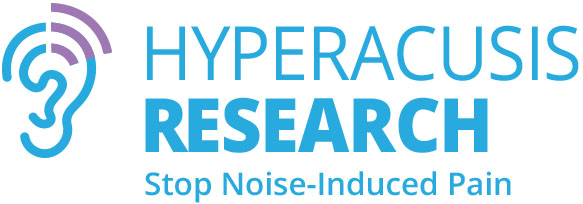
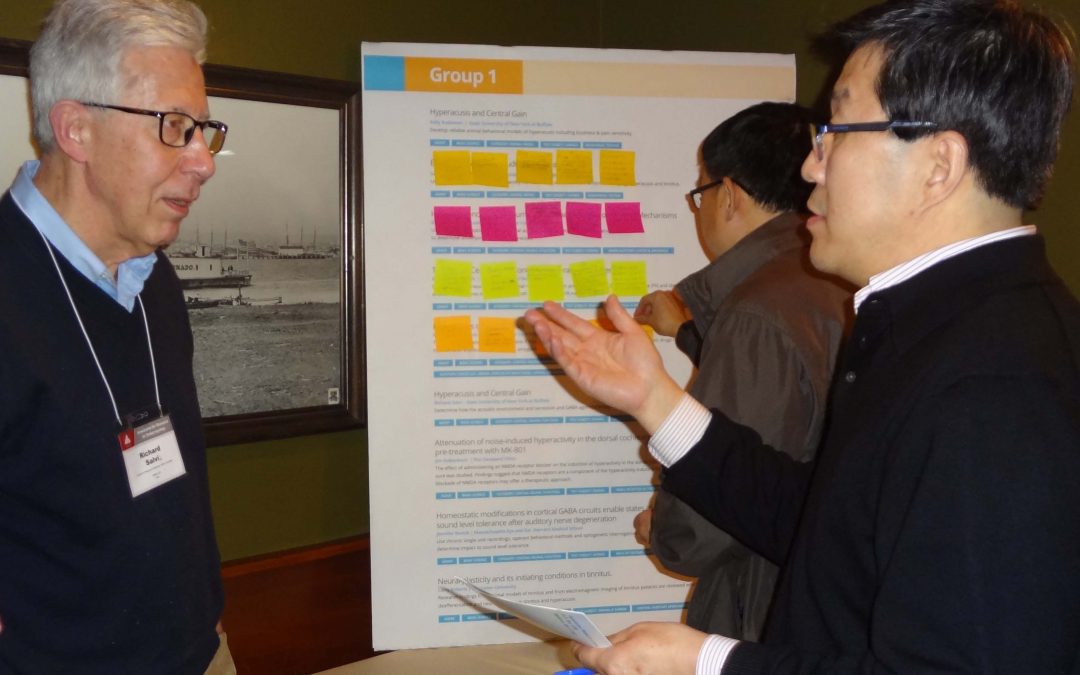
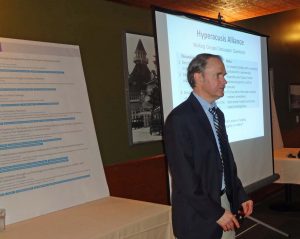
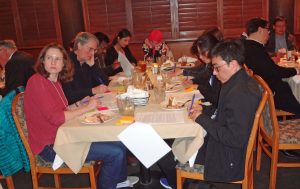
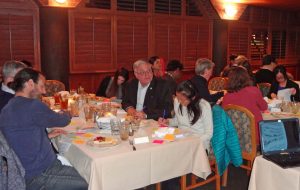
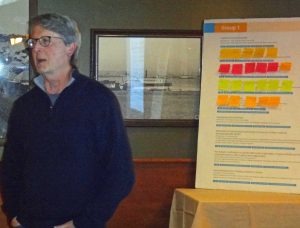

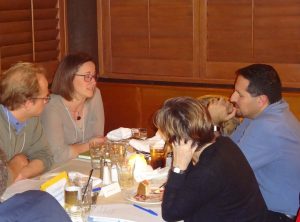
I am just attending my mums 60 – birthday party and I am in burning ear pain, by just sitting away from the family.
But reading this, makes me feel a little better.
Thank you for all the effort you put into finding a cure for us sufferers.
HI Florian. I too suffer from tremendous ear pain and hearing sensitivity. I can trace the origins of my issues to trauma. One thing that I have learned the hard way is that I also suffer from what is called Electromagnetic frequency (EMF) sensitivity. I cannot be in the vicinity of wireless technology. I do not know if we have similar issues but I do know my exposure to EMF makes my ear pain and hearing sensitivity so much worse. I wonder if your exposure makes everything worse as well? Here is info on EMF http://www.bioinitiative.org/
Hi you are collaborating with middle ear specialists. So i would like to know how work is progresing on the middle ears/tonic tensor tympani role in hyperacusis?
Though you’re most likely already aware of it, you could also have a look at medications for epilepsy! Retigabine/Trobalt used to help a lot of people suffering from tinnitus but it’s unfortunately not being sold anymore. Xenon Pharma, however, is working on an improved version of it!
Maybe it could also help with hyperacusis?
Also, I would love to know if research is being done on the link between hidden hearing loss and hyperacusis…
Thank you so much for all the hard work you’re doing, it’s giving me a lot of hope!
I am curious to know what the progress is on in the middle ears role (Tonic Tensor Tympani Syndrome) in relation to the pain of hyperacusis, when ttts also has some of the same symtoms
Hi you are collaborating with middle ear specialists. So i would like to know how work is progresing on the middle ears/tonic tensor tympani role in hyperacusis?
Please work on this FAST!!!!!!!!!!!!!!!!!
Develop passive or active hearing plugs/aids that can attenuate the peak of impulse sounds